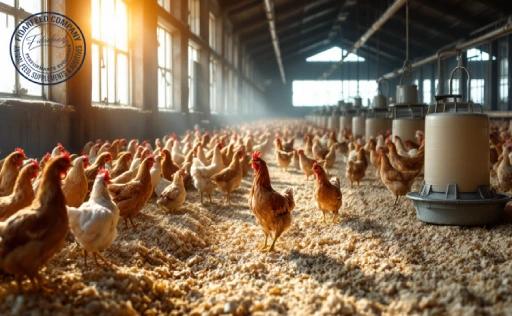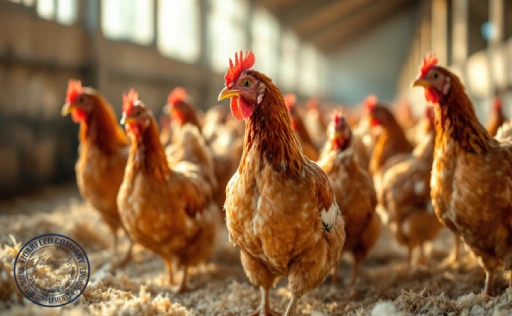What is Stress in Aquaculture and Why Does it Matter?
Stress in aquaculture is an unavoidable challenge that affects the health and performance of farmed fish and shrimp. Just like humans, aquatic animals experience stress when faced with unfavorable conditions, such as poor water quality, overcrowding, and sudden environmental changes. While short-term stress can sometimes be manageable, chronic stress weakens their immune systems, stunts growth, and increases susceptibility to diseases. For aquaculture breeders, understanding and mitigating stress is essential to maintaining a thriving, productive, and profitable farming operation.
Common Causes of Stress in Farmed Fish and Shrimp
Stress in aquaculture arises from multiple factors, often working together to create unfavorable conditions. Some of the most common causes include:
- Water Quality Issues: Low oxygen levels, fluctuating pH, and ammonia build-up disrupt normal physiological functions.
- Overcrowding: High stocking densities increase competition for oxygen and food, leading to aggressive behavior and stress.
Learn more about: Probiotic Supplement for Aquatic Animal
- Handling and Transportation: Harvesting, grading, and moving fish or shrimp expose them to mechanical stress and injuries.
- Sudden Environmental Changes: Temperature fluctuations, salinity shifts, and poor lighting conditions can create stress.
- Poor Nutrition: Inadequate or imbalanced diets contribute to nutritional stress, weakening overall health. Recognizing these stressors is the first step in implementing effective mitigation strategies.
How Stress Affects Growth, Health, and Productivity in Aquaculture
Chronic stress has a cascading effect on the well-being of aquatic animals. When fish or shrimp are stressed, their bodies release cortisol, a hormone that suppresses growth and weakens the immune system. This results in:
- Reduced Feed Conversion Efficiency: Stressed animals eat less and utilize nutrients inefficiently.
- Higher Mortality Rates: Long-term stress makes them more prone to diseases and infections.
Learn more about: Daily Feed Prices for Livestock, Poultry & Aquaculture: Quality vs. Cost
- Lower Reproductive Success: Stress can impact breeding performance, leading to fewer offspring. Understanding these consequences highlights the importance of proactive stress management in aquaculture operations.
The Link Between Stress and Disease in Aquatic Animals
There is a direct correlation between stress and disease outbreaks in aquaculture. Stress compromises the immune system, making fish and shrimp vulnerable to bacterial, viral, and parasitic infections. For example:
- White Spot Disease (WSD) in shrimp often follows exposure to stressful conditions.
Learn more about: How Are Farmed Fish Fed? Understanding Aquaculture Feeding Practices
- Bacterial infections like Aeromonas and Vibrio thrive when fish are weakened by stress.
- Parasitic infestations become more severe in stressed populations. Minimizing stress is a crucial step in preventing costly disease outbreaks and ensuring the sustainability of aquaculture operations.
Effective Strategies to Reduce Stress in Aquaculture
Preventing stress in aquaculture requires a combination of proactive management strategies:
- Maintain Optimal Water Quality: Regular monitoring and adjustments of oxygen, pH, and ammonia levels are essential.
- Control Stocking Density: Avoid overcrowding to reduce competition and aggression.
Learn more about: Why Choose Prepared Feed for Your Farm Animals: Livestock, Poultry, and Aquaculture
- Minimize Handling: Use gentle handling techniques and limit unnecessary disturbances.
- Reduce Environmental Fluctuations: Gradual acclimatization helps fish and shrimp adjust to new conditions. By implementing these measures, farmers can create a healthier, more resilient aquaculture system.
The Role of Nutrition in Stress Management
Nutrition plays a pivotal role in mitigating stress in aquaculture. Providing a well-balanced diet fortified with essential nutrients can enhance stress resistance. Key nutritional strategies include:
Learn more about: Reducing Fish Mortality in Aquaculture with Probiotics
- Probiotics and Prebiotics: Improve gut health and immune function.
- Vitamin C and E: Act as antioxidants, reducing oxidative stress.
- Amino Acids and Omega-3 Fatty Acids: Support metabolic functions and enhance resilience. Investing in high-quality feed tailored for stress management can lead to healthier, more productive aquatic animals.
Technology and Innovations for Stress Reduction in Aquaculture
Modern technology offers powerful tools to mitigate stress in aquaculture. Some notable innovations include:
- Automated Water Quality Monitoring: Real-time sensors detect and alert farmers about changes in oxygen levels, pH, and ammonia.
- Biofloc Technology: Improves water quality and reduces disease risks.
- AI-Powered Feeding Systems: Ensures optimal feeding schedules and reduces waste. Adopting these technologies can enhance efficiency and create a more stress-free farming environment.
Learn more about: Protect Your Aquatic Life with Probiotics
Best Practices for Handling and Transporting Aquatic Animals
Handling and transportation are some of the most stressful activities for farmed fish and shrimp. To minimize stress:
- Use Stress-Reducing Additives: Adding salt or anesthetics to transport water can calm aquatic animals.
- Optimize Transport Conditions: Maintain proper oxygenation and temperature during transport.
- Reduce Handling Time: Use efficient equipment to minimize prolonged exposure to stressors. Following these best practices can significantly reduce mortality and post-transport stress.
Learn more about: Can Probiotics Really Boost Fish Growth in Aquaculture?
Building a Stress-Free Aquaculture System: Long-Term Approaches
For sustainable stress management, aquaculture farms should focus on long-term improvements:
- Implement Biosecurity Measures: Prevent disease outbreaks by controlling water sources and limiting external contamination.
- Promote Habitat Enrichment: Adding structures like submerged plants or artificial shelters creates a more natural, stress-free environment.
- Sustainable Stocking Practices: Properly planned stocking schedules reduce stress and promote balanced growth. By integrating these practices, aquaculture businesses can improve overall resilience and productivity.
Learn more about: Get the Best Value: Ready-Made Feed for Livestock, Poultry & Aquaculture
Conclusion: Prioritizing Stress Management for a Thriving Aquaculture Business
Managing stress in aquaculture is not just about improving survival rates; it’s about enhancing productivity, sustainability, and profitability. By understanding stressors, implementing proactive strategies, and leveraging modern technologies, aquaculture breeders can create an optimal environment for fish and shrimp to thrive. Investing in stress management today will lead to healthier aquatic animals, reduced losses, and a more successful business in the long run.
What are your thoughts on stress management in aquaculture? Share your experiences and insights in the comments below!









